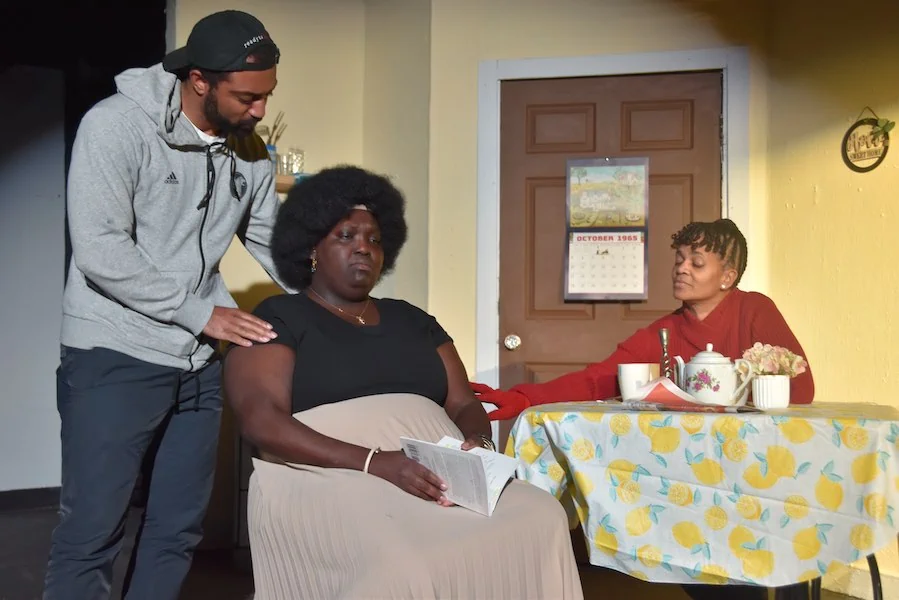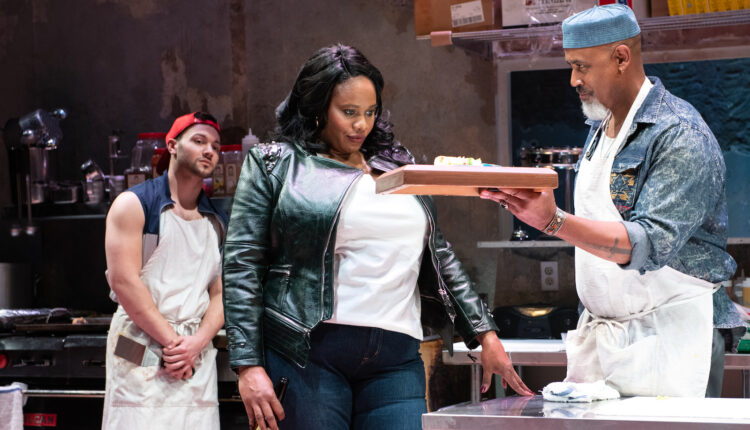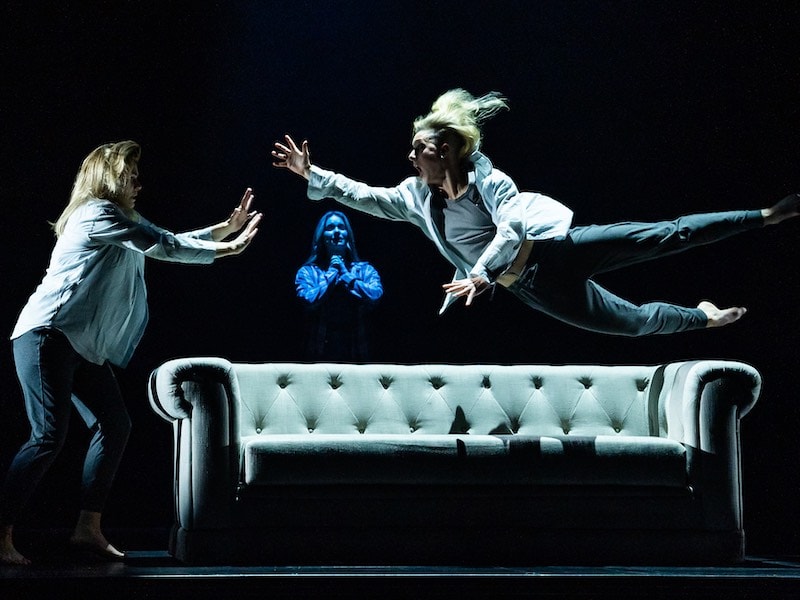By Daarel Burnette II
This article was originally published in DC Theater Arts here.
In the opening beats of Consecrated Ground, directed by Lorraine Brooks and showing at the Laurel Mill Playhouse, we’re introduced via a black-and-white slideshow to Africville, a century-old Canadian fishing village made up of 600 Black descendants of enslaved Americans.
Lopsided wooden shacks seemingly slide down the hills they sit on, litter is strewn about in the streets, and luminous signs hang from lamp posts: Boil the water before drinking.
In the next beats, we’re brought into the tidy home of the Lyle clan, shushing a crying baby, gossipping about the latest goings-on in town and navigating the latest explicit and implicit acts of racism that punctuate their lives, the most glaring of which is the Canadian government’s plot to demolish Africville.
Laurel Mill serves up an appetizing, historically informative version of this 1999 play, written by Black Canadian George Boyd and making its U.S. debut. Despite costume and set inconsistencies throughout and a few poor directional choices (more on that later), its plot is gripping, its characters are relatable, and its theme — Black Americans’ cross-continental 1960s fight for a safe home in Nova Scotia, Canada — is worth telling.
Actress Jacqueline Youm radiates as Clarice Lyle, the strong-willed mother, wife, sister, and niece, fastened to her family legacy, and determined to fight back against the local government, despite threats of violence and her husband’s moral ineptitude. It’s hard to look away from Youm’s stage presence and intimacy with her castmates. She’s out of her league.
Africville is one of hundreds of communities established in the decades after the abolishment of American slavery when millions of Black Americans fled the South’s brutal labor conditions and apartheid government for better-paying jobs, land, and agency.
The problem, as Consecrated Ground explores, is that Black Americans found in these newfound homes some of the same racist ideas and policies that severely restricted their movement in the South. For the white residents, Black people represented cheap labor, competition for jobs, and the potential devaluing of their homes. And they lashed out.
They refused to educate Black people’s children. They harassed and lynched. And they passed a series of housing policies that squeezed Black people into increasingly destitute corners of the cities.
More than 10,000 American municipalities up until the 1960s passed sundown laws, which made Black settlement illegal.
Black people who boarded ships to head to majority Black Caribbean nations like Haiti, or West African colonies like Liberia, faced armed resistance, disease, and starvation.
Canada is not excluded from this phenomenon. The Great White North, as Director Brooks pointed out during a poignant introduction to her play, has long enjoyed a reputation as a refuge for Black American slaves, but has not yet reconciled with its own anti-Black history.
“Racism is worse in Canada,” she said she was told by her mother, who was Black Canadian and made the counterintuitive decision to move back to America.
“Africville matters,” she said. “Their story matters.”
In the play, Africville is plagued by government neglect: there’s no plumbing or electricity, and “life-sucking” rats scamper through the homes. This has resulted in a cynical, distrustful relationship the Black residents have with the Halifax officials.
Clarice is smitten with her newfound husband, Willem Lyle, a crooning carpenter, played by Brock Brown, and signs over the deed to the home. That’s a move she comes to regret when Tom Clancy, played by Nik Henle, knocks on their door with an offer of $5,000 to sell the home.
The city is looking to build a park, bridge, and more harbor space, and Africville is in the way. Midway through the play, the family experiences a death and Clarice is determined to use the nearby cemetery, though the city says there’s no consecrated ground.
Throughout, we’re confronted with the variety of ways Black people have responded to acts of discrimination: rage, passivity, compromise, and courage.
In between a creative split-screen set designed by Lorraine Brooks, characters’ unique personalities shine (unusual for plays about racism): Jimmy “Double Speak” Willis, played by Martin Young, copes with a stutter and what to do with the unusual wealth he’s built; Groovy Peters, played by JoAn Monplaisir, searches for true love; and Clancy struggles with alcoholism, and his own internalized racist ideas about the community he says he’s trying to save.
I was distracted, though, by some of the director’s historically inaccurate choices: the majority of the characters had deep Southern Black American accents, though, according to the script, they’ve been residing in Canada since 1812; Clancy’s cigarette never lights up or puffs out smoke; and several of the characters donned African print, though that style of clothing didn’t become popular until the Black Power movement of the 1970s (the play takes place in the 1960s). The Ankara hand fans the characters cooled themselves off with in one church scene didn’t become popular until the last decade, in fact.
Brown has a lack of commitment during particularly devastating moments: he coldly pats Groovey’s back when she relays a story of being beaten by white men in the street, soberly holds Jacqueline up when she mourns the loss of their child, and awkwardly walks off stage when his wife decides to leave him.
Never mind. Youm, who also served as assistant director, makes this play crackle with energy. She prods with exacting focus when she suspects her family’s livelihood is in danger, yelps with conviction when she spots a rat scampering beneath the table, and grieves with heft when she loses her child.Brooks punches up with Consecrated Ground and, through a powerful epilogue, gives Americans much to reflect on.







